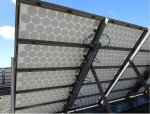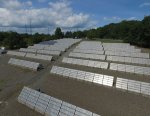caribconsult
Senior Member
- Location
- Añasco, Puerto Rico
- Occupation
- Retired computer consultant
Awesome! I think Enphase makes some quality stuff and they stand behind it. I have had nothing but good things to say about their Caribbean support team...they have been 100% helpful. For reasons unknown, the Envoy would not connect to my house wifi to get on line and report the data...well, it would and it wouldn't...connected and disconnected erratically. I finally did away with the wifi link by putting an EOP adaptor right in the Envoy box where there's a receptacle just for it, and using that to get to the router at the other end of the house. Works perfectly and connected itself as soon as I plugged it in. I don't know how much better than that you could do.
It's good to hear that bigger and more powerful solar panels are emerging. All of it...batteries, controllers, inverters, etc, will get cheaper and better as time goes on, because it's the future for many, particularly those that get a lot of sun, as we do. Use it!
It's good to hear that bigger and more powerful solar panels are emerging. All of it...batteries, controllers, inverters, etc, will get cheaper and better as time goes on, because it's the future for many, particularly those that get a lot of sun, as we do. Use it!







